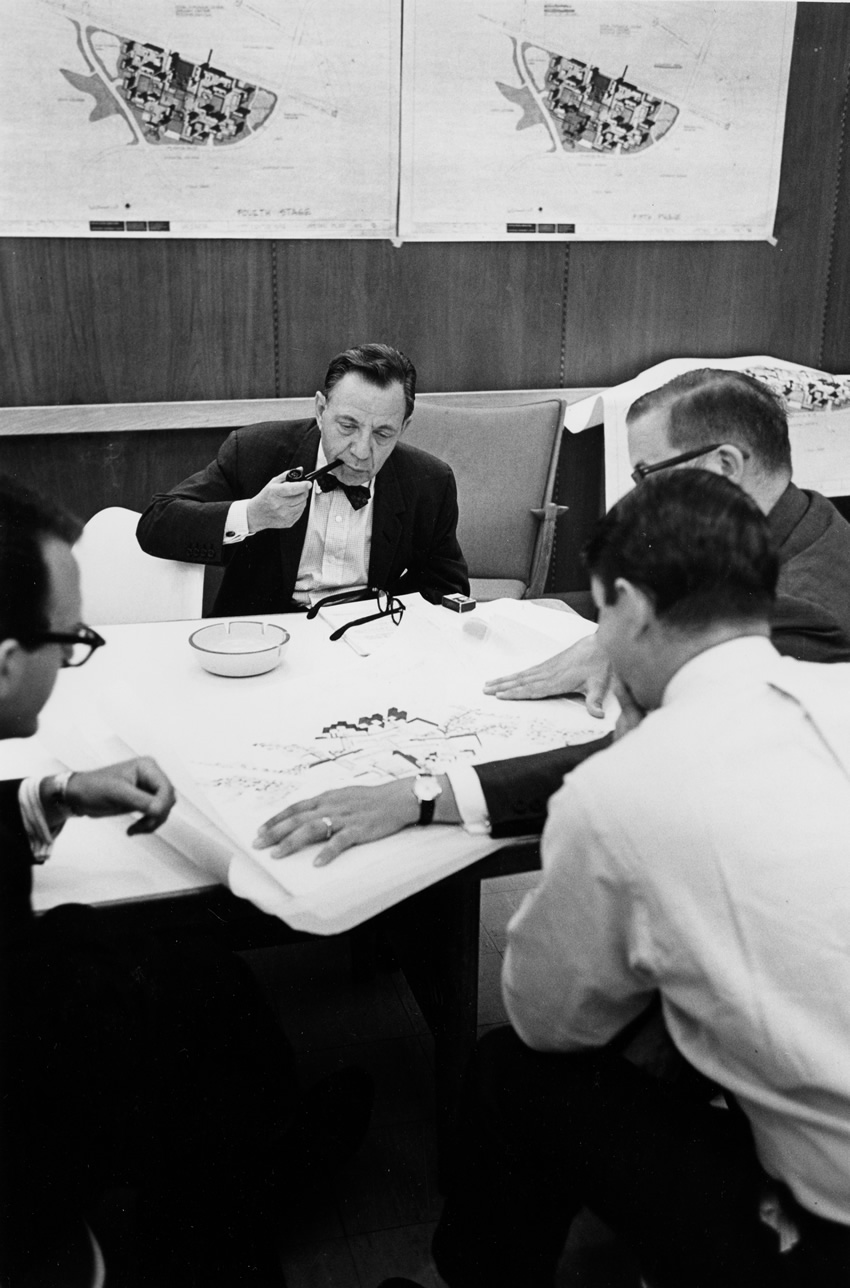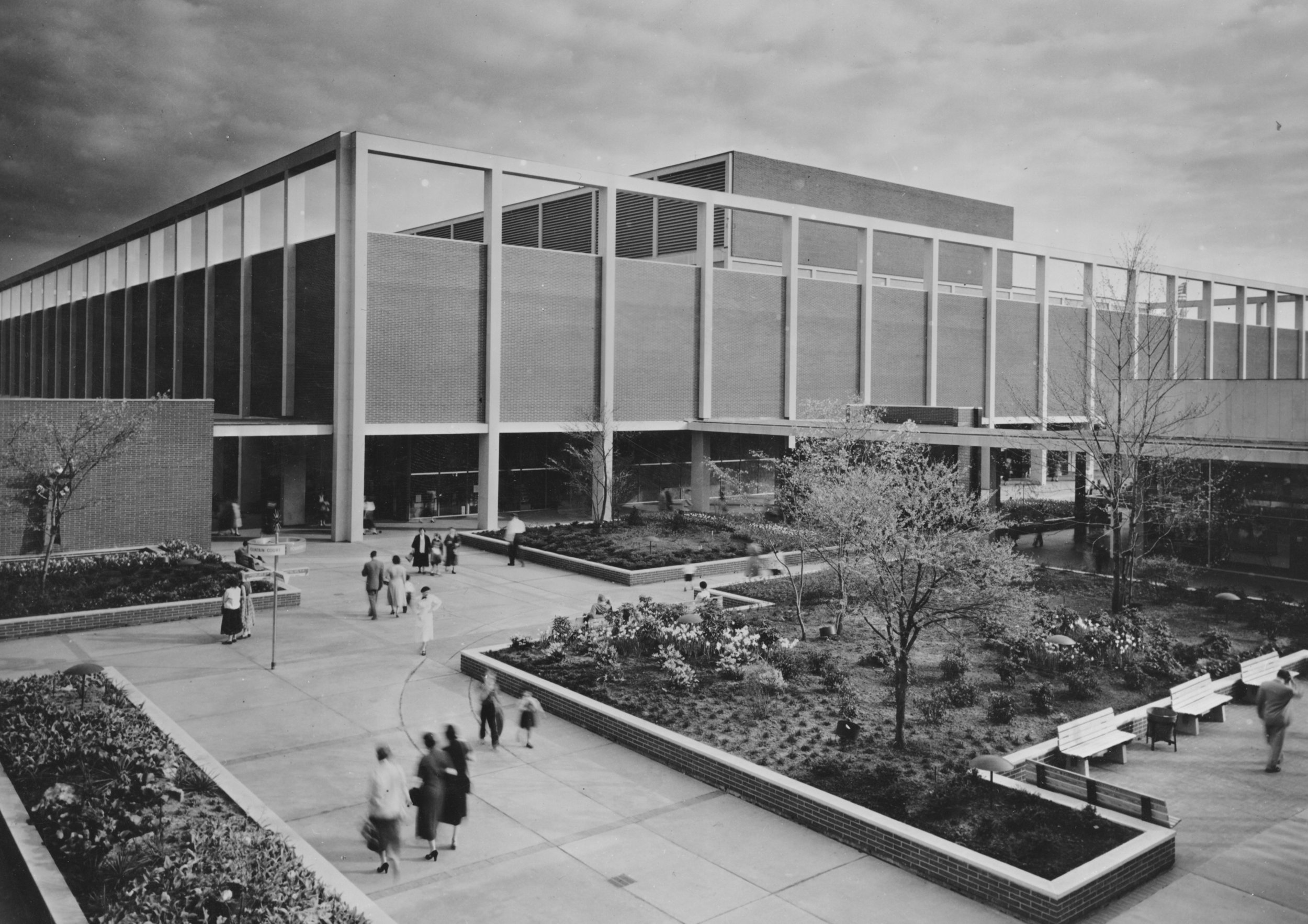Austrian Immigrants II: Architects, Economists, Social Scientists
The exodus of top Austrian talent to the U.S. reached a flood-state with the expulsion of Jews after the “Anschluss.” Among many “modernist” architects leaving for the U.S., Victor Gruen (né David Victor Grünbaum), Richard Neutra, Rudolf M. Schindler and Frederick Kiesler were among the best known. Gruen built the first shopping malls in the U.S. “Northland” opened its door in Southfield, Michigan, in 1954. Gruen tried to arrest the social isolation created by suburbanization and sprawl after World War II with the communal and interactive urban environment he had experienced growing up in Vienna.
World famous fin de siècle Vienna architect Adolf Loos kindled Neutra’s interest in urban America. Frank Lloyd Wright became his American mentor and his Vienna classmate Schindler invited him to come to Los Angeles. Neutra’s architectural style “biorealism” was influenced by Freud’s psychoanalysis. He became famous for his single family homes, whose designs aimed at being an extension of the nature of their owners. “The Lovell House” (1929) in L.A. became his best known creation. Schindler built a house for himself in the early 1920s. After its purchase by the Austrian government in 1995, it became the Austrian Museum of Applied Arts (MAK) Center for Art and Architecture in Los Angeles—carrying on Schindler’s modernist tradition as a forum for cultural and artistic exchanges by designers, artists and architects.
Frederick Kiesler started designs for an ”endless house,” collapsing the boundaries between art and architecture. Radically re-envisioning the possibilities of dwelling, Kiesler wrote that “the house must be a cosmos in itself, a transformer of life-forces.”
Most of the second and third generation of the notable “Austrian School of Economics” started by Carl Menger—explaining economic behavior in terms of utility—emigrated to the U.S., where today they are known as advocates of free-markets, and opponents of state regulation under the label of “Austrian Economics.” Refugees Ludwig von Mises, Oskar Morgenstern, Fritz Machlup and Gottfried von Haberler all received top-notch academic appointments at Ivy League schools and helped reshape American economic thinking.
Friedrich von Hayek looked for better opportunities first in London and then at the University of Chicago—he earned a Nobel Prize. Harvard University offered a chair to Joseph Schumpeter in the early 1930s—he became one of the best known economists of his generation. Peter Drucker came to the U.S. via London and advanced to the status of America’s premier “management guru.”
Trained mathematician Paul Lazarsfeld first went to the U.S. on a Rockefeller fellowship in 1932. An avid Socialist youth leader in his native Vienna, he pioneered systematic sociological survey research in the U.S. and became a leader in studies of mass communication and factors leading people to making choices between political candidates or between competing products. As professor of sociology at Columbia University, he trained dozens of students in his sophisticated methodologies. In their academic positions, these Austrians contributed mightily to making American universities leading institutions of higher education in the world.
Gallery - click to enlarge:
Sources:
Essays by Hannes Richter on Gruen, Julian Steiner on Neutra, and Christoph Thun-Hohenstein on Schindler in Austrian Information 69 (Fall 2016), 18–29.
Janek Wasermann, Marginalized Revolutionaries: Austrian Economics from Coffeehouse to Tea Party. New Haven: Yale UP 2018 [forthcoming].
Lewis Coser, Refugee Scholars in America: Their Impact and Their Experiences. New Haven: Yale UP, 1984.
Christian Fleck. Etablierung in der Fremde: Vertriebene Wissenschaftler in den USA nach 1933. Frankfurt: Campus Verlag, 2015.


